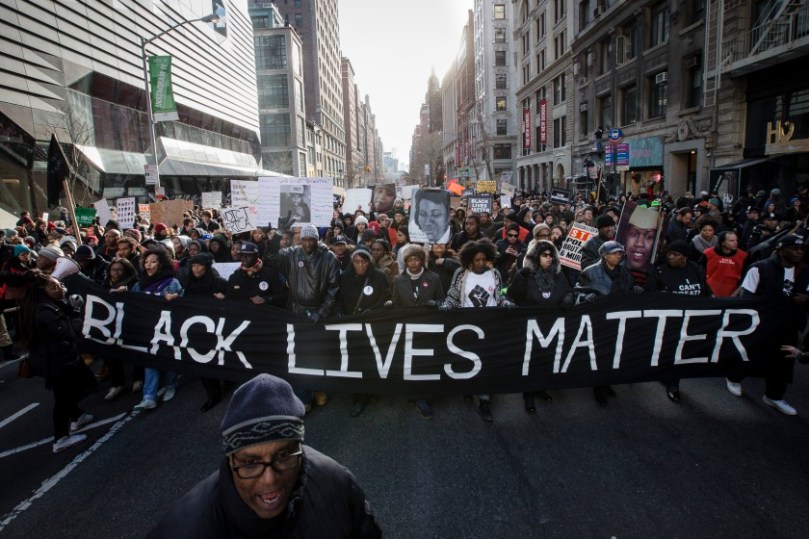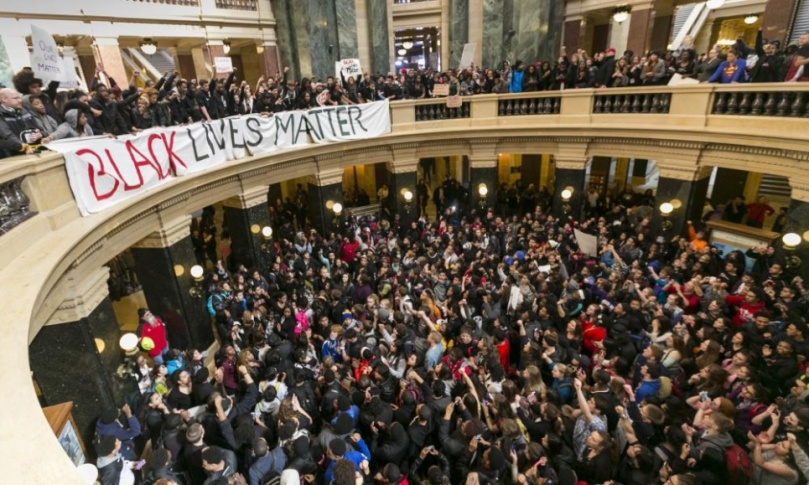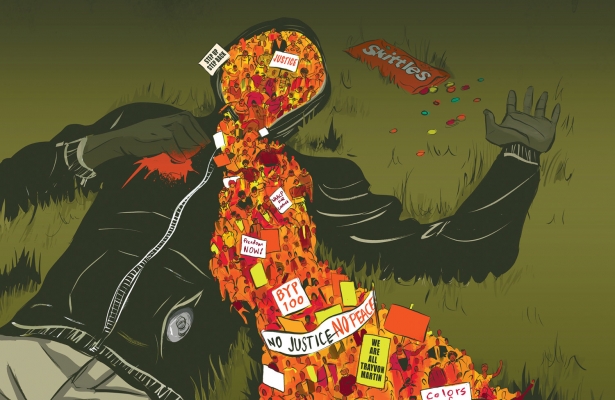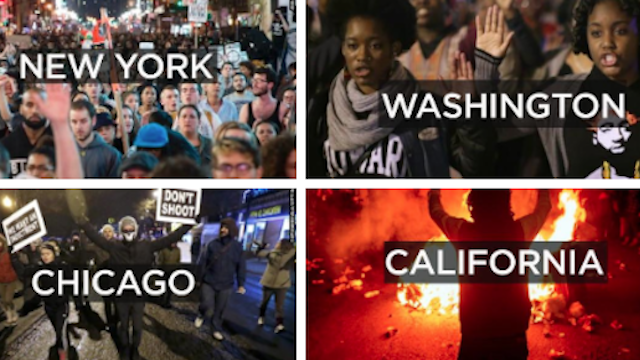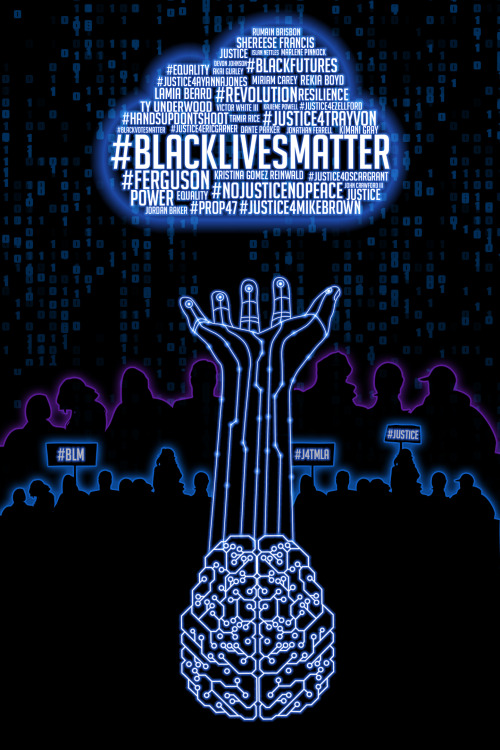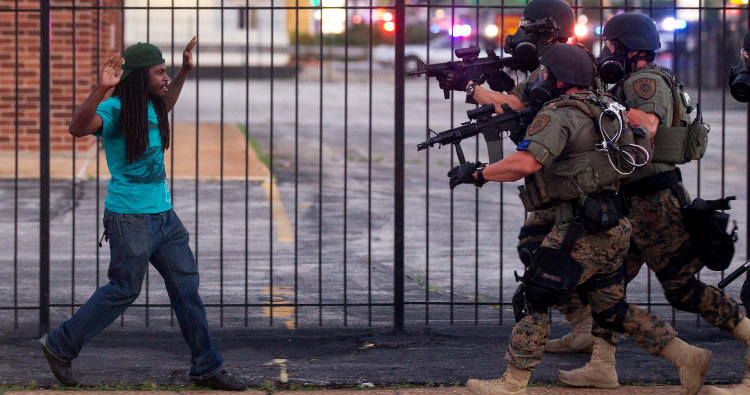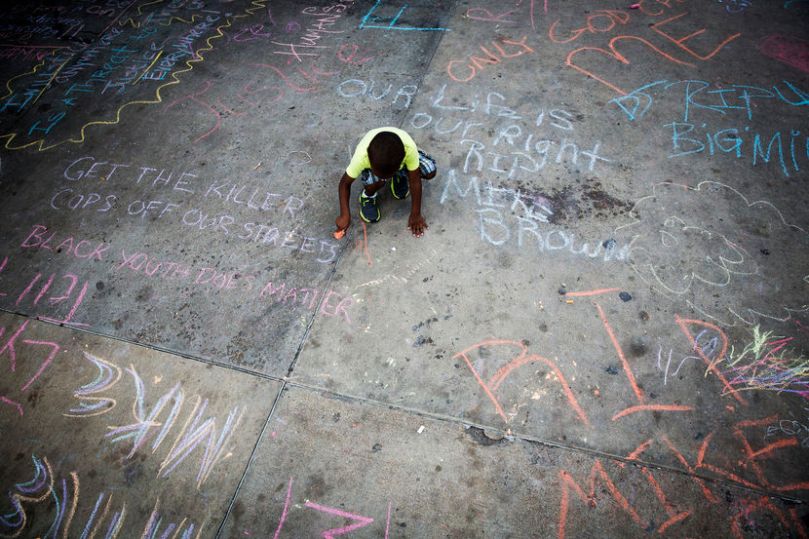I want to write about police brutality and the murder of unarmed Black bodies by police officers in the United States, and the relationship to biopower and necropolitics. I also want to write about the protest movements, including #blacklivesmatter #staywoke #nojusticenopeace #handsupdontshoot and #icantbreathe, and the relationship to unruly politics.
But it’s hard for me to know where to start (because this started 400+ years ago?), it’s hard for me to stay up-to-date (because new forms of violence happen daily/hourly), and it’s hard to know how to end (because this has not ended). The most recent example of a protest that I know of is centered around Martese Johnson. Martese Johnson was brutally assaulted by police officers during an arrest that he did not resist, and had to get ten stitches. Hundreds of students have gathered to protest this incident, calling for #justiceformartese. Last week nineteen year old Tony Robinson was shot and killed by a police officer.
The United States is a country built on slavery. Black death, as well as Native American genocide, built the system. The United States became rich by exploiting, commodifying, and torturing enslaved people’s bodies, while enslaved people had to “survive, resist, or endure” (Baptist).
In the article Necropolitics by Mbembe, it is written that “slavery is one of the first instances of biopolitical experimentation” (17). What’s biopolitics? Mbembe spends time explaining Foucault’s concepts to us, writing that “biopower divides people into those who must live and those who must die” (17). Dividing people in this way “presupposes the distribution of human species into subgroups”, which is what Foucault labels with the term racism (Mbembe 17).
The United States has systematically killed Black people over the last several centuries. The U.S. Criminal justice system functions as a contemporary system of racial control (Alexander).
In 2012, a man named George Zimmerman killed an unarmed seventeen year old boy named Trayvon Martin. In 2013, George Zimmerman was found not guilty in the murder of Trayvon Martin. Protests sprang up all across the country, and a new generation of black activism was launched. “New organizations have been formed, new leaders have emerged, the spirit of resistance has been given a reboot, and a new movement has taken hold” (Smith).
In 2014, Michael Brown was murdered by the police in Ferguson, Missouri and Eric Garner was murdered by the police in New York City. The state did not bring charges against the police officers responsible for their deaths. After the murder of Michael Brown, the day of his memorial became unruly. Police brought in riot gear and helicopters. Since then, there have been ongoing protests, unruliness, and “civil disorder” (wikipedia).
How do we view this unruliness? Is it just looting? Just unrest and disorder? A riot? A protest? One Black activist writes on her blog that communities pushing back against the murderous police force that is terrorizing them cannot be labeled as just a ‘riot’. She writes, “It’s an uprising. It’s a rebellion… people rising up in righteous anger and rage in the face of oppression should not be dismissed as simply a ‘riot'” (McKenzie).
Activists from Palestine have reached out to the activists in the United States, using Twitter to give advice like how to wash teargas residue from their eyes and how to make a gas mask. They’ve connected using hashtags such as #Palestine2Ferguson and #CommonOpressor.
Biopolitics (and necropolitics) help us to understand the construction of desirable and undesirable populations. Some bodies deserve a chance at life and reproduction. For Others, imprisonment or death is acceptable, “or even important for the survival of the nation” (Bassichis and Spade, 199).
The view of the Black body as undesirable, as threat, as criminal – the Black bodies that are murdered by the police have been relegated to a category in which their “lives..are not lives worth grieving; they belong to the increasing number of those who are understood as ungrievable, whose lives are thought not to be worth preserving” (Butler). Even public mourning becomes a form of unruliness because “when lives are considered ungrievable, to grieve them openly is protest” (Butler).
In the book All About Love, bell hooks writes:
White supremacy has taught him that all people of color are threats irrespective of their behavior. Capitalism has taught him that, at all costs, his property can and must be protected. Patriarchy has taught him that his masculinity has to be proved by the willingness to conquer fear through aggression; that it would be unmanly to ask questions before taking action. Mass media then brings us the news of this in a newspeak manner that sounds almost jocular and celebratory, as though no tragedy has happened, as though the sacrifice of a young life was necessary to uphold property values and white patriarchal honor.
